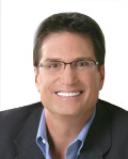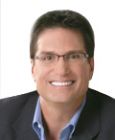Addiction
The New Heroin User
Today's heroin addict is college-aged, professional and white.
Posted December 4, 2014
Today’s heroin addict is not who you think. The typical image that springs to mind is that of a poor, disheveled, homeless black male living a life of crime to feed his addiction. Forty years ago, this description was accurate. Today's heroin addict can be male or female, is college aged, white and suburban. Addiction is, indeed, an indiscriminate master.
Heroin, produced commercially in 1898 by Bayer Pharmaceutical Company, was a new and highly effective cough, chest and lung medication. Patients liked it and it worked. It became the drug of choice to suppress coughs and a “non-addictive” morphine substitute to ease withdrawal symptoms. In 1911 J.D. Trawick wrote in the Kentucky Medical Journal, "I feel that bringing charges against heroin is almost like questioning the fidelity of a good friend. I have used it with good results." Eventually, heroin was discovered to be even more addictive than morphine and in 1924 Congress banned the manufacture, importation and sale of heroin.
Today, heroin is enjoying a resurgence with middle-class, 20-something white men and women who are turning to it as a cheaper alternative to prescription pain pills. OxyContin is expensive and no longer easy to abuse by crushing or dissolving, thanks to a reformulation by pharmaceutical companies. Alternatively, an easily accessible hit of heroin can be purchased for as little as $10. Heroin is very habit forming and for some it may take just one or two hits to trigger an addiction.

It happens innocently enough, and Mary’s story can sum up the process. She was from an upper middle class family and a high school volleyball player who hurt her knee. Recovery included surgery, and her doctor prescribed narcotic pain pills, including OxyContin. The surgery was a success, but Mary found she enjoyed the high more and more, even when she no longer needed meds for pain. Her doctor, happy with the results, discontinued the prescription pain meds -- but Mary craved the rush of the drug and began doctor shopping and buying pain pills on the black market. This was costing hundreds of dollars a week, so as her addiction intensified she began smoking heroin as a cheaper alternative. Adamant about never injecting, it wasn't long before Mary had the tell-tale track marks of an addict.
It's not just limited to the 20-somethings, either. Brilliant, educated and successful professionals are falling prey to the ravages of heroin. On February 2, 2013, America was stunned with the heroin overdose death of 46-year-old Oscar-winning Philip Seymour Hoffman. The year before, Hoffman had entered rehab due to an addiction to prescription painkillers, but eventually switched to heroin.
"It's hard to talk about the heroin problem without talking about the prescription drug (pain pill) problem," said White House Office of National Drug Control Policy Rafael Lemaitre. As it becomes even more popular, we could well see heroin become the narcotic of choice of younger and older abusers.
Heroin is proving to be the latest American threat, and we are attempting to keep up with the devastation from crime, overdoses and death. Overdoses are so common that New York City police have 19,500 officers carrying Naloxone (it counteracts the effects of heroin overdose). Small towns are not immune. Taunton, MA Police Chief Edward Walsh said of heroin, "It's penetrating our entire society. It's everywhere in our community."
Charlotte's Carolinas Medical Center has noted a marked increase of young professionals -- police, attorneys, nurses and even ministers finding their way into detox centers seeking treatment for their heroin addiction. Since the majority of these addictions started with prescription pain meds, doctors are becoming less willing to prescribe these pain pills and DEA restrictions are increasing in terms of how much and for how long the drugs can be used. A study in the New England Journal of Medicine indicated from 2009 to 2012 OxyContin use had decreased, while the abuse of the cheaper, more accessible heroin had almost doubled.
The crackdown on prescription pain pills seemed needed and necessary at the time, but the unintended surge in heroin has created new problems including the involvement of drug cartels. American authorities are trying to gain control of prescription painkiller abuse, while also decriminalizing marijuana. This has caused the wholesale price of weed to drop, so Mexican drug farmers are turning away from marijuana crops and opting to grow opium poppies, instead. Through it all, legitimate chronic pain patients are being punished while abusers have becoming very creative in feeding their addiction.
The war on drugs has cost the US more than a trillion dollars (and now costs $51 billion annually) with nothing to show for it and as the rules change and the legalization of marijuana continues, the absurdity can’t be missed that some people today are serving prison time for the use of a drug that is now legal in some form in many states.
Drugs are not the problem. Addiction is the problem. Everyone who takes a drink, smokes a joint or uses heroin does not become an addict. Instead of shipping non-violent addicts to prison, they should be given medical help. Addiction is a health issue, not a criminal issue. Until this is recognized, the US addiction epidemic will continue to spiral out of control.




